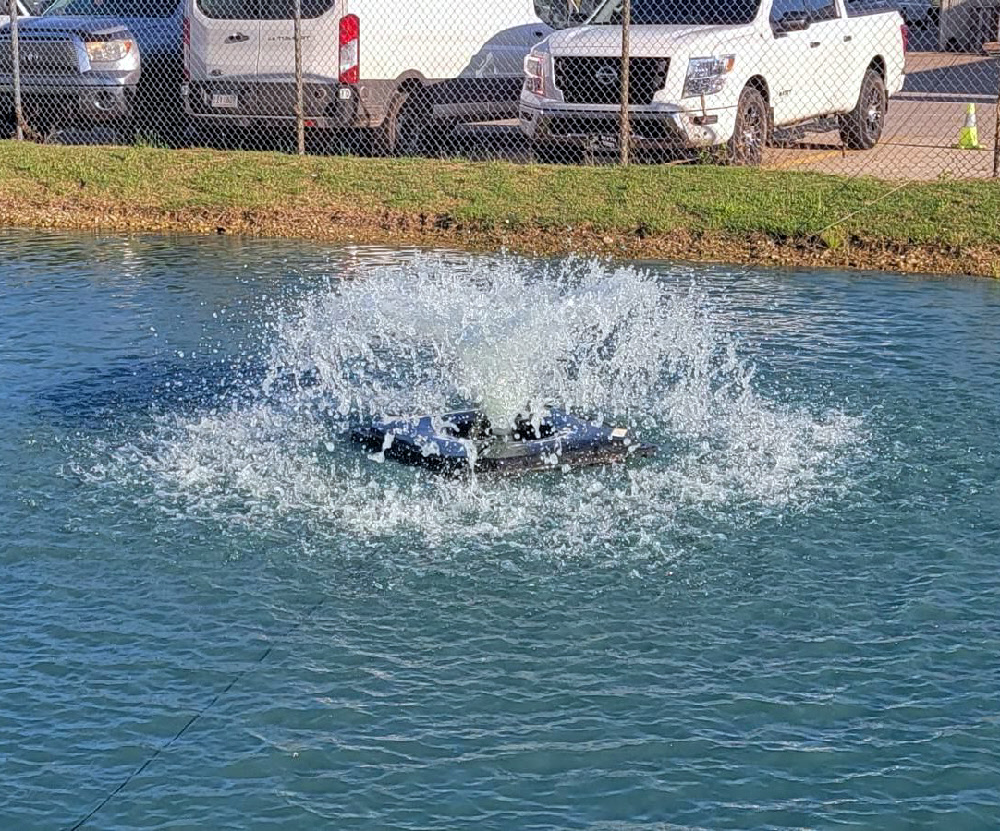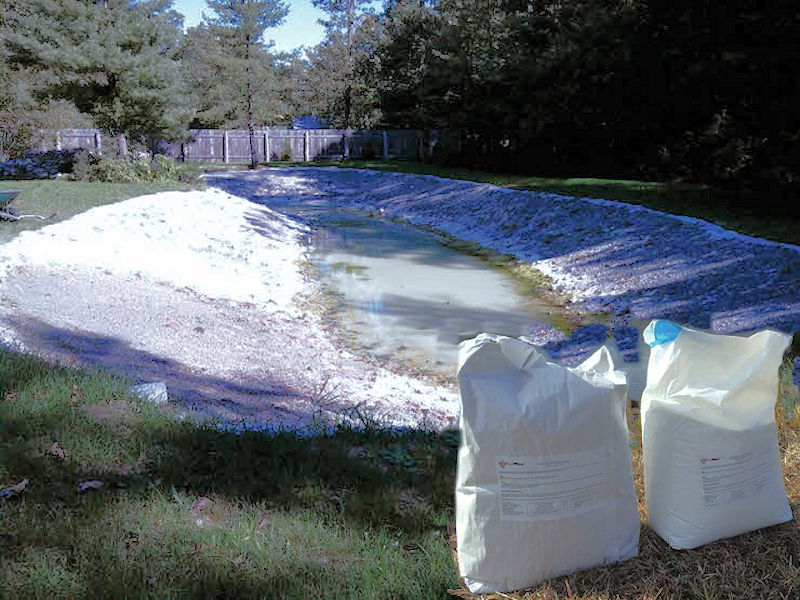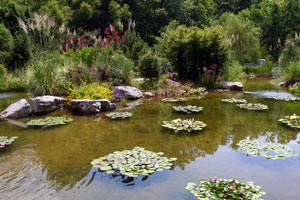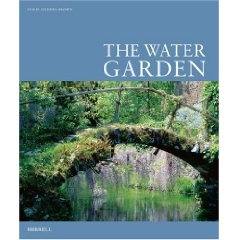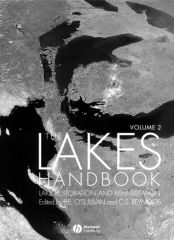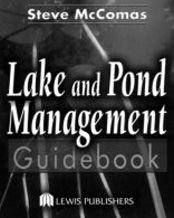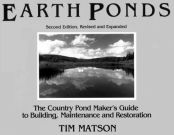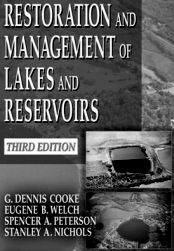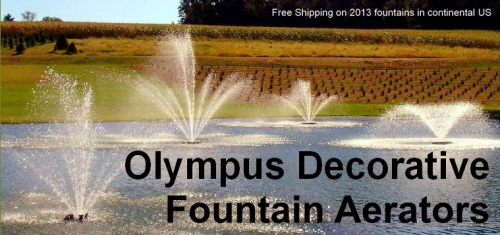
Custom Search
|
Algaecides & Bacteria | Deicers & Bubblers | Weed Removal | Liquid Bacteria | Pond Pumps & Fountains | Aeration | Winter Pond Care | Algae Control | Pond Liner | Muck Pellets | Build a Solar Aerator | Rotary Vane Compressors | Floating Fountains | Building a Pond | Linear Air Compressors & Pumps | Weighted Airline | Diffusers & Airstones | Bacta-Pur Bacteria | Solar Aeration Systems | DC & Battery Operated Pumps | Windmill Aeration | Dock Bubbler Packages | Building a Waterfall | Dyes & Colorants | Consultations | Questions & Answers | Links & Resources | Eurasian Milfoil | | Mosquito Control | Pondkeeper Treatments | Aeration Systems | Septic Bacteria | Grease Trap Blocks | Compost Aeration | Dissolved Oxygen Meters | SOTR & Pumping Rates | Duckweed Control | Pond Plans & Pond Building Books & Guides || News on Ponds | Pond Pictures | Pond Care Strategies
| Aeration
Systems for Ponds & Lakes Aeration for ponds and lakes, understanding the importance and limitations of pond aerators Everyone we
talk to, when it comes ponds, asks about aeration for their pond
and most of them speak of it as if it were some complicated process
or expensive undertaking. It's not complicated and it doesn't have
to be expensive. Of course there
are turn-key packages on the market that have all the bells and
whistles and added parephenalia that makes it nice to look at and
like many beautiful objects they can be pricey. And...you know
where I'm going...if you know the most efficient bubbler, airstone
disc diffuser then you probably have an idea on what diffuser would
work with your air pump! There are many
pond supply stores that sell parts or pre-built all-inclusive systems
and you've probably heard of many of these or looked for reviews
on forums and bulletin boards for recommendations. Vertex® Aeration
Systems, AquaMaster® AquaAir, airBOOST® Deep Water Aeration
Systems, AirTech Systems, Dr. Foster & Smith Koi Kits, Air-2-Go
to mention just a few of the diffuder type packages that exist.
All of them will work and some will work better than others. What
makes one system more-efficient and more long lasting? Well...how
the air pump is housed, the parts that are used, the ventilation
design, the interioir mechanics of the electrical and magnetic and
piston systems or rocking dual-piston etc..
These aerators use powerful, silent, linear compressors that have a two-year warranty which is twice the industry standard. You will be pumping only air into your pond so there is no electricity cords in the water and because you are using air to blow bubbles into the pond you can use as little as 50 watts to aerate a pond more effectively than with a 1/2 HP 1800 watt fountain! These systems use Underwriters Laboratory Listed (UL), all-weather linear compressors that send air through the included weighted airline to the diffuser assembly or assemblies which are all included. All couplings, connectors, valves and instructions are include d so you won't have to make a trip to the plumbing supply store to by a missing fitting!
You only need to place the 4-stone diffuser into your pond, the weighted airhose sinks and is a dark blue so practically invisible in ponds, connect the airline to the compressor outlet and plug it into to a standard 110/115V plug. While the compressors are designed for 4 seasons you will prolong the life of the compressor by housing it in a small box or decorative cover near the pond. If you are a do-it-yourself aeration system type of person then you likely only want to buy diffusers, tubing or pumps. If you are like most of us who want a complete turn-key aeration system that is cheap and easy to install without having to go to the hardware store for plumbing bits or have Uncle Jimmy build a wooden compressor shack then we recommend these fully complete systems. The pond size these simple systems can aerate depends mainly on the depth and shape of your pond, if you are unsure if these systems will be adequate for your pond then send us an email before you buy.
The included noise-reducing, fan-ventilated, weatherproof, heavy-duty steel cabinet can be installed easily on a post, pier or boat house. Instructions are included, and the entire unit can be shipped Ground. 115V/60 Hz. My experience has shown that in most cases that adding air diffusion into the bottom levels of the pond is often the the best form of aeration. This manner of aerating is basically the injection of air bubbles into the water to supply oxygen as well to create water movement because as the small air bubbles rise to the surface they create a movement that pulls oxygen deprived waters from the depths up towards the surface where they can interact with the atmosphere and achieve a high level of efficient oxygen transfer. The water of the pond is continuously being turned over and circulated towards the the surface by air diffuser plates, airstones, disc diffusers, or coarse bubble homemade diffusers that some people build themselves. There are many ways to get the air into the pond but the general rule is that the smaller the bubble the better the efficiency of the system will be. Aeration can be done with electric air compressors or linear pumps or by windmills or even solar aeration systems! There are many ways to achieve the goal and the location of your pond will determine whether you want to use a windmill for aeration, an electrical system, or a solar pump. Whatever way you do it, take the time to install the best system you can afford as seeing a pond with clear water and happy fish and frogs is truly a joy and any fish lover knows that maintaining fish, either trout, ass or koi, is a passion and now to be taken lightly! Aeration, depending on your longitude and latitude in the world can be effective all year round or only during certain seasons but it is undoubtedly the key ingredient in maintaining a healthy aquatic system. The benefits of using an aeration system, especially when combined with applications of natural pond bacteria that feeds on organic materials like leaves and fish waste, will return your pond to vibrant health in no time at all!. Building an aeration system can be a snap especially if you have a pond store in your town where experts can help choose the best system components for you, although looking on the Internet for pond supplies is another fast way to get the information you need. But be careful, there are many people trying to get pond owners to part with their hard earned money with new fangled technologies like ultrasonic algae killers or complicated bubbler systems, when the fact is it is not rocket science! Solar Aeration Systems Build Your Own Aeration System Complete Aeration Systems Air Compressors & Air Pumps 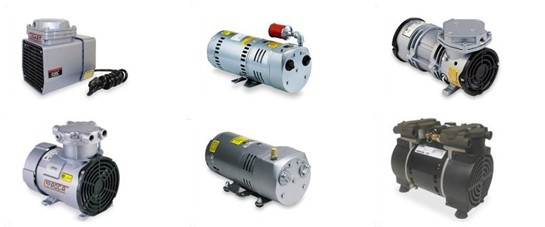 The heart of any lake-bed, or bottom-mounted aeration system is often the air compressor itself. There are a variety of compressors that are quiet, small, energy efficient compressors that will pump a steady and constant flow of oxygen to your bottom-mounted diffuser system. The depth of the pond where the diffusers are located will determine the type of compressor you require. Shallow ponds less than 9 feet deep can often be aerated with a small linear or diaphragm type of pump that are usually fairly silent and real energy misers. If you have a deeper pond, from 8 to 15 feet deep you may need to use a rotary vane compressor, although the carbon vanes are known to require changing every 18 to 34 months. Piston compressors can delivery up to 35 PSI or more and are excellent for deep water aeration. While piston compressors often do not have the high levels of CFM (cubic feet per minute) of airflow as a rotary vane or linear pump, they make up for it in reliable strong airflow. Windmills can also be used and in North America there are a few choices of windmill aeration systems both in Canada and here in the United States and I have even seen some real go-getters build a windmill aerator out of old cars and tractor parts, but I wouldn't recommend it. The standard windmill like a Superior Windmill or Koenders Windmill or Beckermills Windmill or American Eagle Windmill or Outdoor Water Solutions Windmill works by having a diaphragm compressor, bellows system in the American Eagle Windmill, in the head of the windmill As wind turns the fans of the windmill compressed air is forced down the airline into the airstone in the pond. No electricity is required and the simple technology has worked extremely well for decades as farmers across the plains have attested to. Aerating dugouts with a windmill is a popular practice in areas where there is often no electrical source, plus there is only the initial cost and construction of the system to contend with and no ongoing maintenance fees. Solar systems can be built as well but the DC compressors used in solar aerators deliver fairly low levels of pressure and CFM. Solar direct systems are less expensive and can be built by many people who want a homemade aeration system. Battery back-up systems are more expensive but allow you to use large compressor like a small rotary vane compressor which will increase your airflow and allow you to aerate a larger area. Whichever compressor you choose you will then need to run an airline to your diffuser system (airstone, membrane disc, diffuser tubing) and there are ways to save money here. Using weighted tubing or self-sinking airhose is the fastest way because it will sink quickly on it's own but it can run over $1.50 per foot or more. A cheaper way is to use standard airline, often 1/2" or even 3/8" which does float but by zip tying some rebar or threading the tubing through bricks you can run any length from the compressor to the diffuser for under $100. In order to determine the size of the compressor and the number of diffusers you will need there are at least two critical factors to consider and this is why it is often good to consult a pond expert before starting. First you must know the true depth of your pond as this will determine the PSI required from your compressor and when you look at the shape of the pond this determines the number of diffusers you need which will determine the best CFM you need from your compressor since most diffusers require at least .5 CFM for operation. This data helps you decide if you can get away with using a linear air pump or need to go with one of the bad boys like a 1/2 HP piston compressor or 1 3/4HP rotary vane. Making the wrong choice at this stage can mean burning out a compressor and losing a lot of time and money in the process! If you are using a windmill or a high pressure dual-piston compressor then the compressor can actually be replaced quite far from the pond, sometimes up to 900 feet or 1 km away although as you can imagine this requires laying out some 3/4" airline which can be a messy job if you need to bury your tubing. Better to try and get the system as close to the pond as possible although I want you to understand that you can go a long distance with the right tools and products. A round pond like a big bowl with a single deepest area and an equally proportional interior grade may require only one diffuser placed at the deepest point. This will provide a nice even circulation but the diffuser doesn't necessarily have to be in the center so look at the entire pond as a whole because raising fish can add additional points of concern when using aeration such as overheating the pond with aeration. There are thermostat controls to automatically tun on aerators when temperatures drop below a certain level, this helps prevent fish kills as trout are very susceptible to warm temperatures. An irregular shaped, often kidney shaped or bean shaped, pond with more variations in depth and shoreline slope may involve the installation of one or more diffusers but again, this is not always the case. Balance the need for aeration by looking at the existing condition of the pond, do you have algae, are fish dying? Sometimes even in a large pond we only add a single aeration station...it all depends and there are no hard a fast rules to go by...although pond stores will try and often sell their biggest aeration package they can!
When comparing
aeration systems it is a good idea to look for forums and reviews
that discuss the pros and cons of various systems. Since the principals
of aeration are scientific and many companies offer products that
do basically the same thing to various degrees of efficiency then
it is up to us as consumers to use our due-diligence before buying
a pond aerator. To compare prices with our recommended systems we
have grouped some of the more popular bottom-diffuser aerator brands
together for comparision with our best aerator systems. In these fountains,
the motor is held just below the surface of the water by a black
or blue low-profile float, some fountains have white floats but
I find these to be a bit too noticeable on the surface so prefer
the black or blue.
Popular Aeration Brands For The Private Pond Owner
Email
us for information or with your questions. | |||||||||||||||||||||||||||||||||||||||

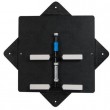
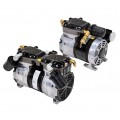
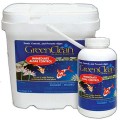
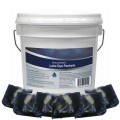
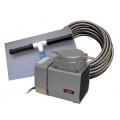
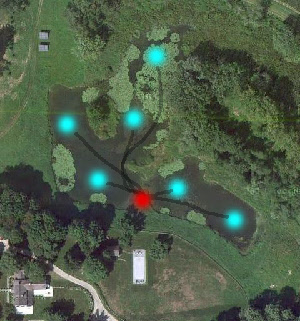
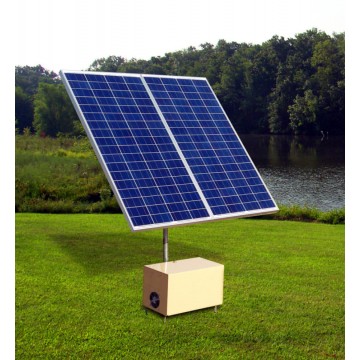 Solar
Direct Drive 12 Volt DC Solar Aeration Systems
Solar
Direct Drive 12 Volt DC Solar Aeration Systems